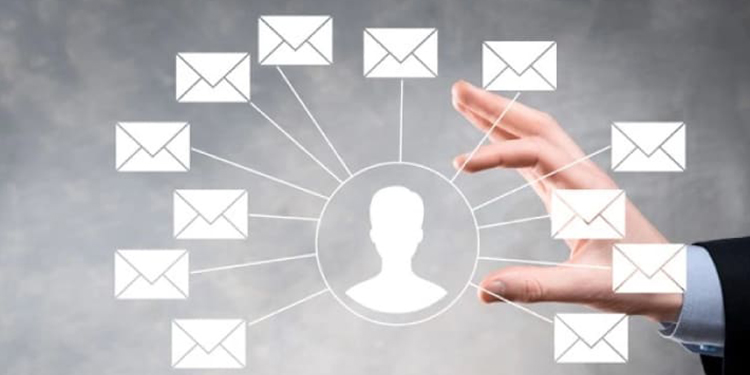
Mastering Lead Nurturing: Strategies for Converting High-Value Prospects
Author: Calvin Adams
Lead Nurturing
Lead nurturing is an essential strategy for businesses that are looking to build long-term relationships with their target audience. The process of lead nurturing encourages businesses to engage the target audience by providing relevant information at each stage of the buyer’s journey. Also, lead nurturing is the best-targeted approach that allows businesses to efficiently use their resources and marketing costs.
Another major advantage of the lead nurturing process is that it significantly contributes to customer retention and loyalty.
If you want to leverage lead nurturing and enjoy its benefits, below are some of the top strategies for lead nurturing that help in effectively engaging and converting high-value prospects.
Top Strategies for Lead Nurturing
-
Understand your Audience Better Through Customer Journey Mapping
The first step to enhance the effectiveness of the lead nurturing process is to understand your target audience and customer journey mapping is one such strategy that helps you to deeply understand your audience.
A customer journey map is a visual representation of the steps a customer takes as they interact with your company. It can help you understand your audience better by showing you their pain points, motivations, and goals.
First, you need to identify your target audience. Once you know who you’re designing the map for, you can start to map out their journey. This includes identifying the touchpoints they have with your business/brand, as well as the emotions they experience at each stage.
Once you have a map of your customer journey, you can start to identify areas where you can improve the experience. For instance, helping your audience in navigating the website, providing relevant resources, etc. By understanding your customers’ needs and pain points, you can make changes to your business that will improve their experience.
By mapping out the customer journey, you can optimize communication channels, ensure consistent messaging across different platforms, create a seamless experience for your customers, and this cohesive approach enhances the effectiveness of the overall lead nurturing process.
-
Provide Personalized Experience
One of the most important things you can do to make your B2B nurturing campaigns more effective is to personalize the experience for each lead. This means understanding their needs and interests and then providing them with the resources and experience that are tailored to your audience.
Some of the ways to provide a personalized experience to enhance the lead nurturing process are:
- Use segmented email lists to send targeted emails based on the lead’s interests and behavior.
- Creating detailed buyer personas and personalizing landing pages for each lead, based on their demographics and interests.
- Leveraging preferred social media platforms for each segment of leads and engaging them on a personal level to strengthen relationships.
- Offer personalized discounts and promotions based on their past purchasing/online behavior
- Implement targeting and retargeting strategies to reengage the audience who were interested in your products but left without converting for some reason.
- Leverage AI and human customer support to personalize the experience of the audience/prospects.
Personalizing the experience of the prospects is an effective lead nurturing strategy to convert high-value prospects because you are showing each lead that you understand their needs and that you are providing them with the information they need to make a decision. This builds trust and increases the likelihood of converting leads into customers.
Additional Read: B2B Lead Generation Ideas to Fill Up Your Sales Pipeline
-
Share Valuable Resources Consistently
Lead nurturing is a long-term strategy that requires patience and consistency. One of the most important things you can do to nurture leads is to share valuable resources. Share the resources by understanding which stage your customers are in. This could include blog posts, eBooks, whitepapers, case studies, webinars, and other content that provides them with information that is relevant to their needs and interests.
When you share valuable resources with leads, you are demonstrating that you are an expert in your field and that you are interested in helping them solve their problems. This can build trust and credibility, which are essential for converting leads into customers.
-
Lead Scoring can be Your Savior
Lead scoring is a method of assigning a numerical value to each lead based on their characteristics and behavior. This allows marketers to prioritize their outreach and focus on the leads that are most likely to convert.
Lead scoring helps to identify the leads that are most likely to convert. When you already have information on which lead has the highest score, it becomes easy to nurture the leads.
For example, a lead who has visited your landing pages multiple times, subscribed to a newsletter and engaged with your social media posts would likely score higher than a lead who has only visited your website once.
Lead scoring can also be used to automate lead nurturing campaigns. For example, when a lead is assigned a score, it can be automatically added to a drip campaign that is tailored to the needs of that specific score. This helps marketers stay organized and ensure that all leads are receiving the right information at the right time.
-
Plan a Multi-Channel Nurturing Strategy
A multi-channel strategy is one of the effective strategies that helps to nurture the leads at different touch points from different channels according to their buying journey. Not all potential customers are active on the same channels, so by using a variety of channels, businesses can ensure that they are reaching and engaging diverse audiences.
When the audience is nurtured through their most-used communication channel, they are more likely to notice your message and engage with it. By using various channels like different social media platforms, email, and content marketing, you can connect with audiences that are active on specific channels. Being present across all the channels increases the visibility of your brand throughout the entire decision-making process and helps to effectively nurture the leads.
To make it precise, below are the tips to leverage multi-channel marketing for lead nurturing:
- Identify your target audience and what channels they are using.
- Create a variety of content that is relevant to your target audience’s interests.
- Use a variety of channels to promote your content and engage with potential customers.
- Track the performance of your lead nurturing efforts and make adjustments as needed.
-
Email Lead Nurturing
Email lead nurturing is a cost-effective way to reach a large number of potential customers and engage them at scale. You can track the results of your email campaigns see how they’re impacting your business and nurture leads from time to time. Email lead nurturing acts as a personal channel that allows you to build relationships with potential customers.
Here are some ways to use email lead nurturing:
- Email lead nurturing can be used as a channel to send onboarding/welcome messages to your potential customers
- Using emails to share regular updates about their interested product/service
- Create automated drip campaigns to send a series of targeted emails over time, gradually nurturing leads through the sales funnel.
- Provide information on special discounts or promotions and share educational information
- Follow-up emails, retargeting emails, abandoned cart emails, post-purchase emails, and more.
Additional Read: Accelerating Success: Strategies for Effective Sales Lead Generation
-
Leverage Marketing Automation
As discussed above, lead nurturing is a long-term process that involves leveraging various strategies and different platforms such as emails, social media, paid ads, lead scoring, content marketing, and more.
Marketing automation can help with lead nurturing by automating many of the tasks involved in the process such as:
- Email marketing automation including personalized emails,
- Creating content and images through AI to develop relevant resources
- Using automation in social media engagement to schedule posts and track interactions
- Segmentation of audience
- Using automation to track the behavior of the leads in various touch points like websites, emails, social media, and others
- Automated re-engagement campaigns for those who are less active, and others.
Conclusion
The above lead nurturing strategies help your business to increase conversion rates and customer satisfaction. Consider using the combination of the above strategies and strategically plan a lead nurturing process that aligns with the objectives of your business.







